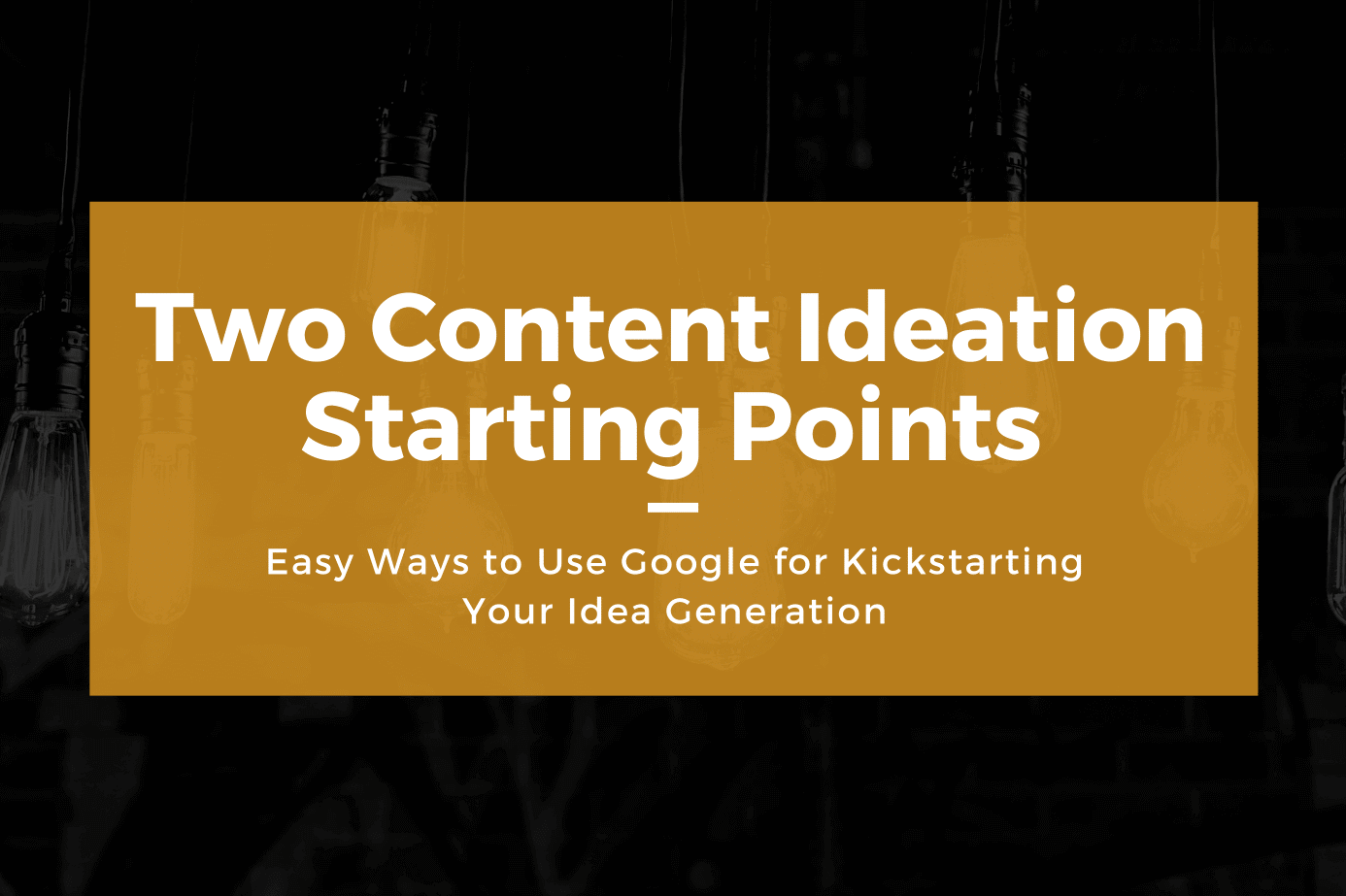Whether you’ve been in the content marketing game for 10 years or 10 weeks, there’s one challenge we all face—constantly figuring out how to come up with content ideas.
Even if you’re relentlessly repurposing your content and keeping your publishing schedule within reason, idea generation is a never-ending task. It can be exhausting.
The good news is that you can come up with content ideas in all kinds of different ways. Maybe a customer conversation sparks a few new article ideas. Maybe you were reading some relevant blog posts from industry leaders and decided to write up a counter opinion. Or, maybe you sat down with a few people on your team for a brainstorming session.
All of these approaches are great ways to build out your editorial calendar.
But what happens when you’re completely stumped? You’re on your own. No team to lean on, no tool like Ahrefs to dig into, and no new customer conversations to tap into.
When you need quick and easy ways to build some idea generation momentum, Google has you covered.
Here are two (completely free) ways to kickstart your process for coming up with content ideas.
1. Use Google Autocomplete to Come Up with Content Ideas
“Autocomplete is designed to help people complete a search they were intending to do, not to suggest new types of searches to be performed. These are our best predictions of the query you were likely to continue entering. How do we determine these predictions? We look at the real searches that happen on Google and show common and trending ones relevant to the characters that are entered and also related to your location and previous searches.” — Danny Sullivan, Public Liaison for Search at Google
What started as a way to save people time when typing up their Google searches has turned into a full-blown, endless source of free SEO insights.
The most important thing that Sullivan mentions is that Google generates autocomplete suggestions based on two things—popularity and recent trends.
For the average user, that means a more predictive search experience.
But for you? It means instant insight into what matters most to your audience.
Those insights can help pull you out of low points in idea generation by guiding you toward relevant topics you can build on.
The Trial and Error Approach to Google Autocomplete
All you need to start generating content ideas with Google autocomplete is a seed keyword.
If you run a blog that covers ecommerce strategy, you can use that basic umbrella term as your starting point.
Begin by typing “ecommerce strategy” in a new Google search. (Preferably in private mode to avoid any influence by your browser history.) Here’s what you see immediately.
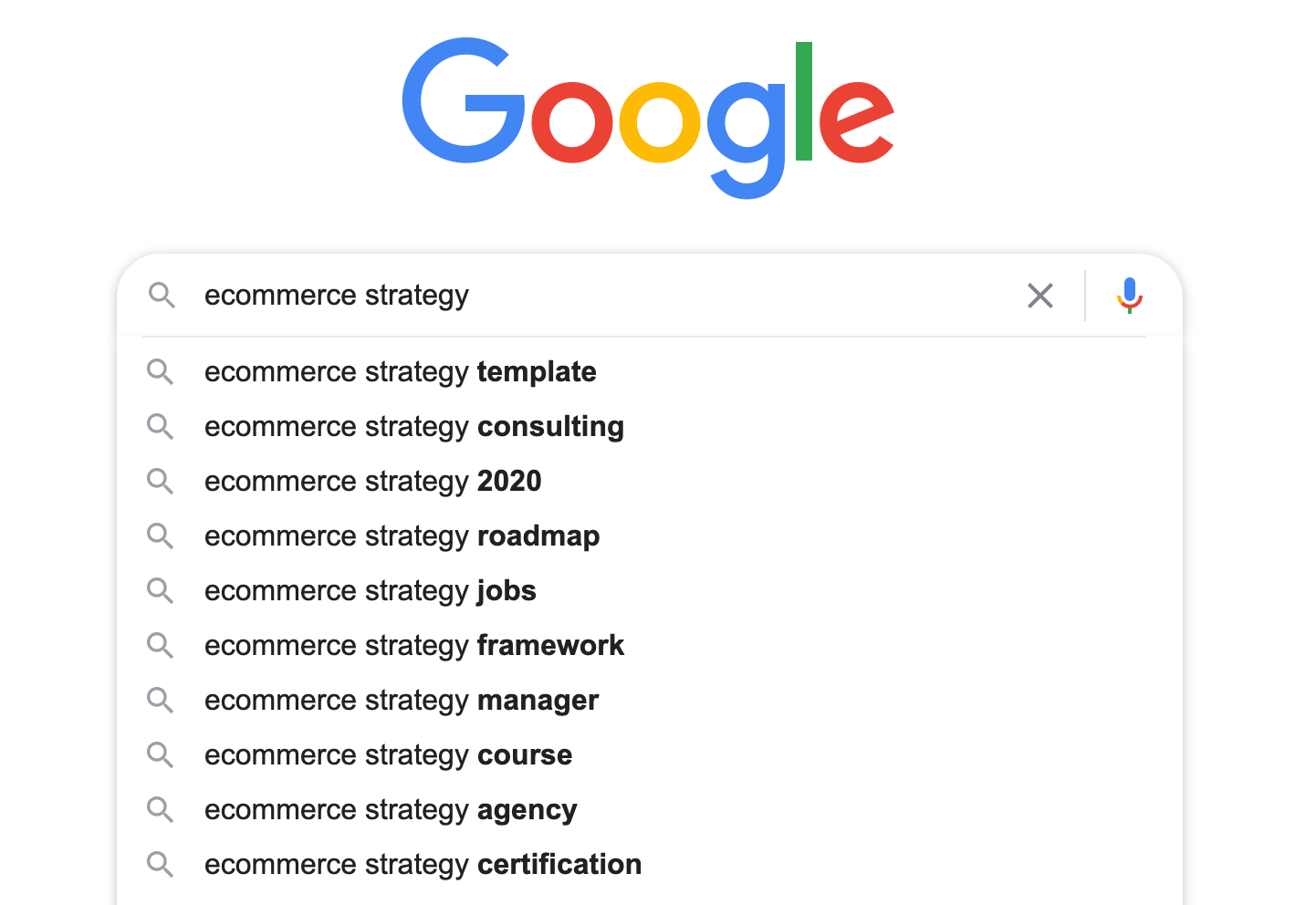
Qualifying terms like “roadmap,” “template,” and “framework” give you some insight into what matters most to people searching for ecommerce strategy advice. The intent varies from education to execution, but you can drill down deeper with autocomplete.
If you’ve already covered those high-level topics (or just want to focus on longer-tail keywords), start running some trial and error with autocomplete. Type in a single letter after your seed keyword or build on one of those initial results and see what you get.
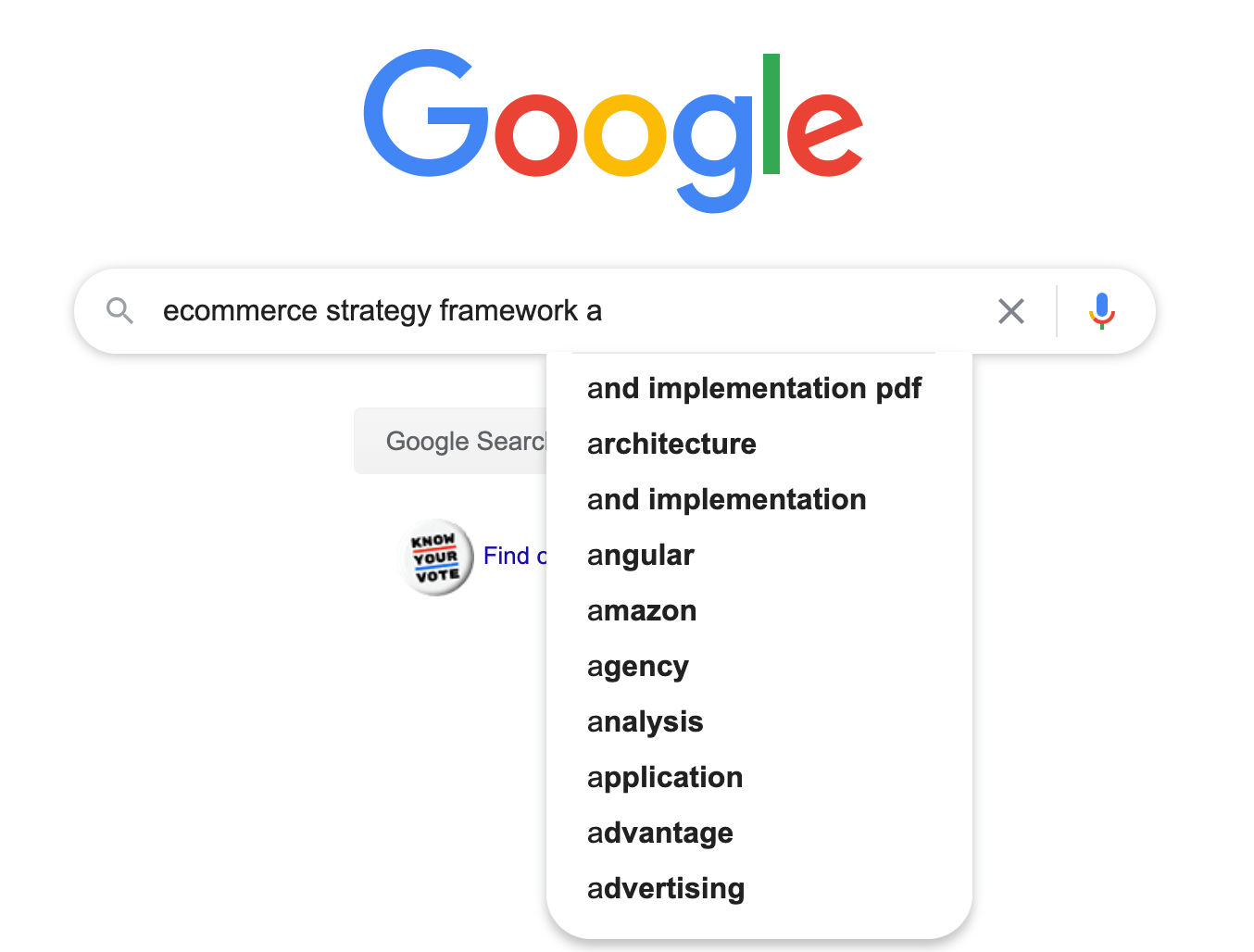
A high-level keyword like “ecommerce strategy framework” might lead you down the path of writing an article about your brand’s thoughts about building an ecommerce business.
But go a step further by typing the letter “a,” and you see that searches can get much more technical. People are wondering how to build the right architecture for an ecommerce site—and specifically want to know how that impacts SEO performance.
Maybe these ideas are relevant to your audience, and maybe they aren’t. But the point is that with just a few seconds of brainstorming using Google autocomplete, you can find all kinds of new rabbit holes for exploring content ideas.
Run through dozens of variations of seed keywords and follow-up letters to come up with content ideas that resonate with your specific audience.
Take Advantage of Conjunctions with Google Autocomplete
If you want to take a more targeted approach to idea generation with Google autocomplete, you can focus on how conjunctions change results.
Let’s start this time with “content marketing” as the basic keyword. Adding just one letter to the term may not lead to specific enough ideas for you. Instead, try adding conjunctions like “for” or “and” to get some more specific guidance.
Here’s what you get from autocomplete when you enter “content marketing for” as the seed phrase:
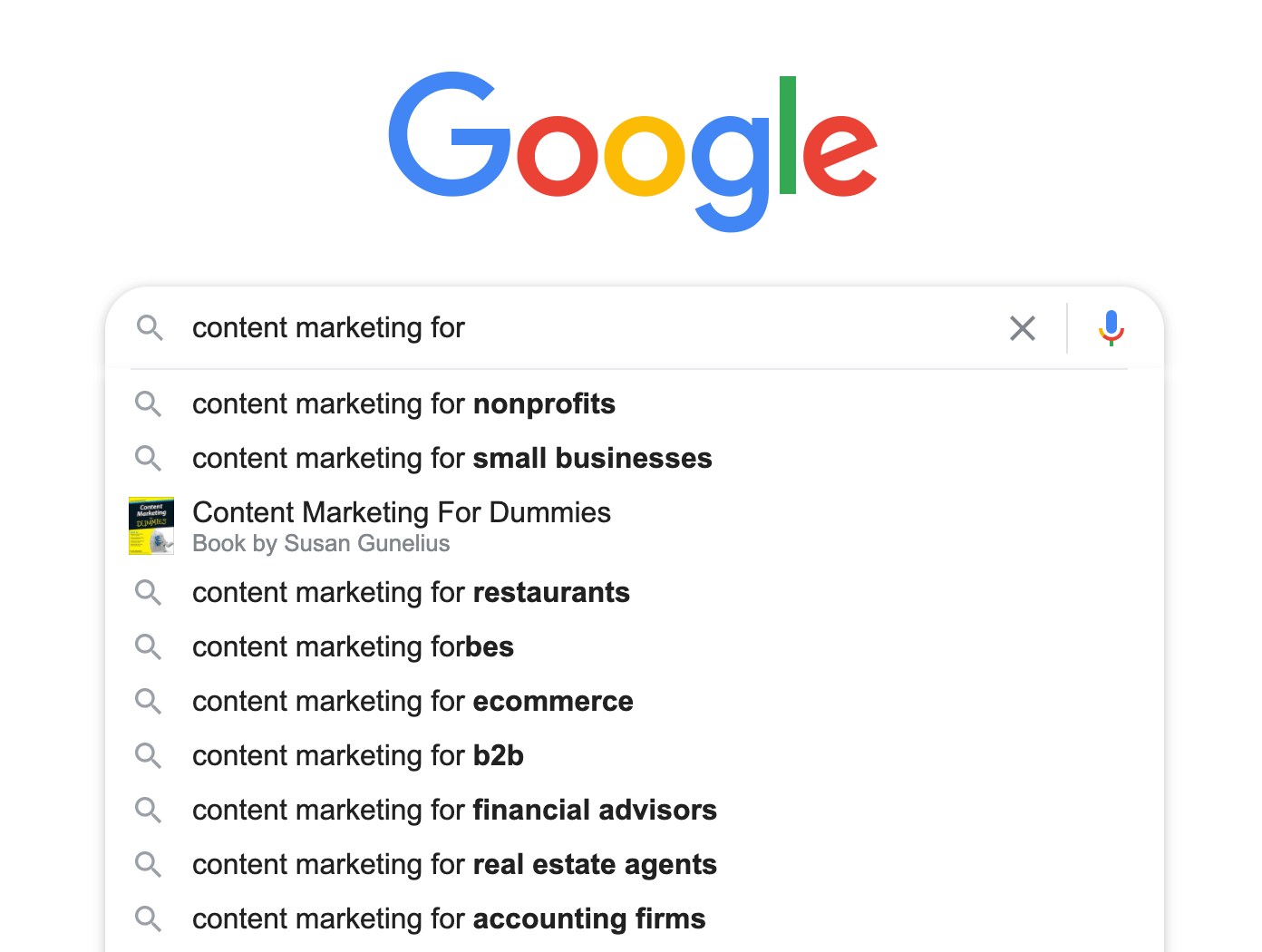
And here’s what you get with “content marketing and” as the starting phrase:
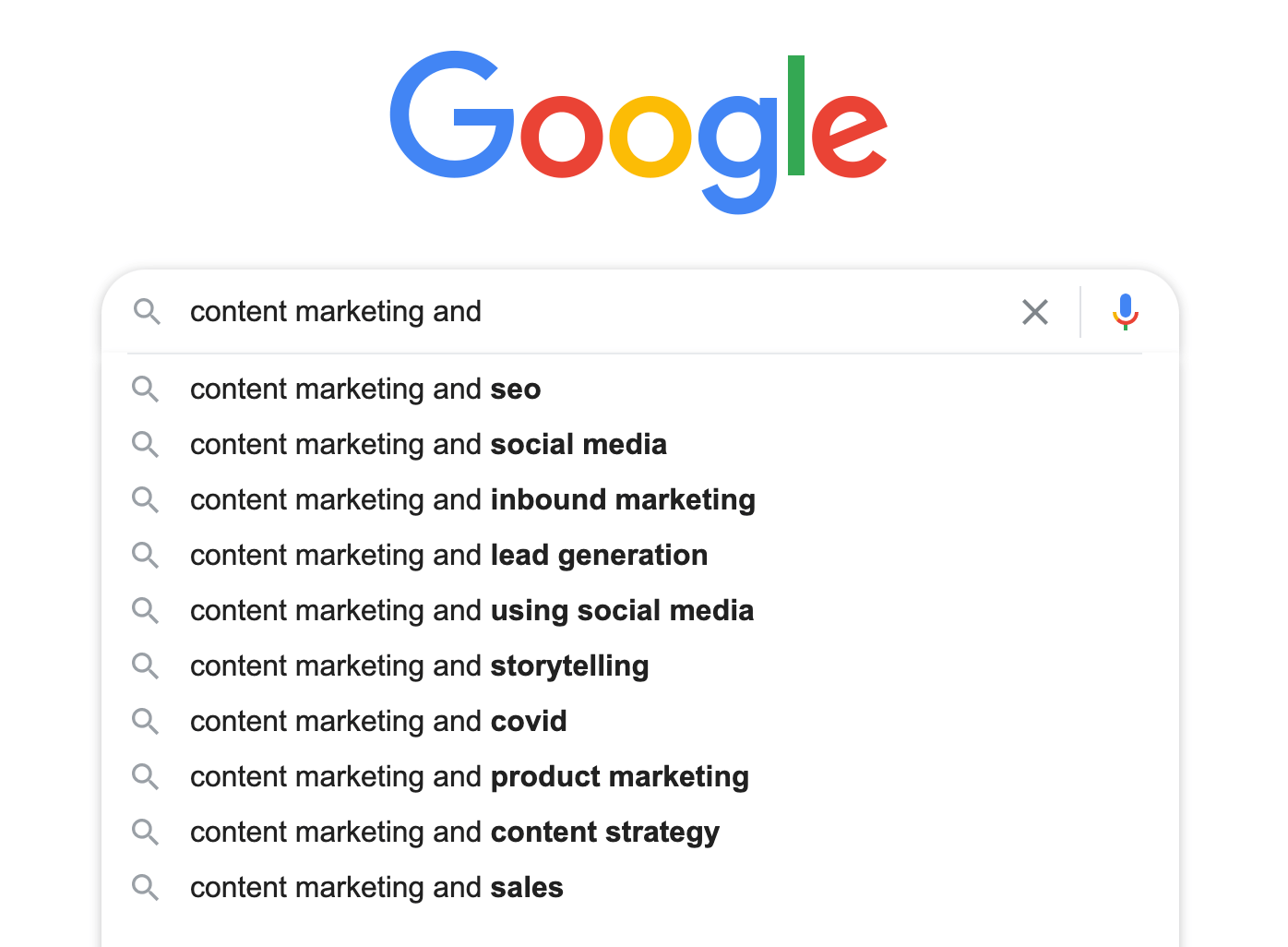
Conjunctions make your autocomplete suggestions more specific to individual use cases and uncover important related topics that should inform your content strategy. Especially when you’re stuck for content ideas, this autocomplete strategy can spark some inspiration and put you on a path to filling the editorial calendar.
2. Generate Content Ideas with Google’s “People Also Ask” Feature
The other main Google feature that makes content ideation easier is the “People Also Ask” section of any SERP.
This feature goes a step further than the autocomplete strategies by presenting the most pressing questions facing searchers.
At first, you’ll see a basic list of questions for your seed keyword. In this case, we went with “content marketing strategy” again.
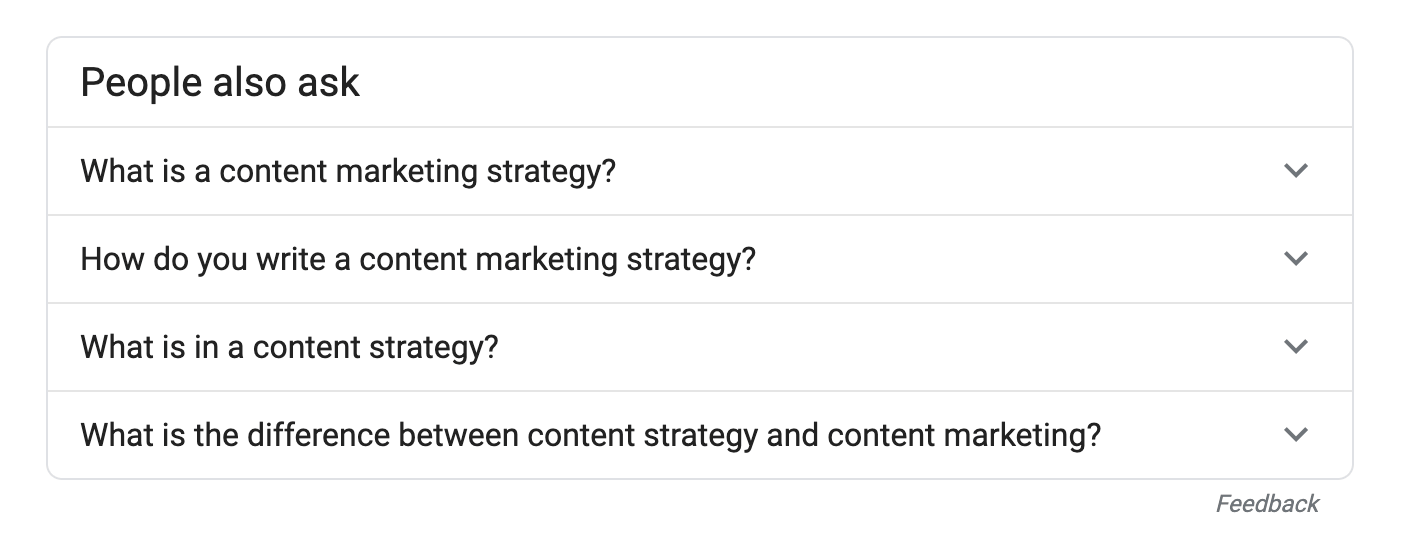
But that’s not all you get with this feature. When you start clicking into individual drop-down options, the list starts to expand. Instead of just those first few basic options, Google starts to understand what you’re looking for—and they expand the list accordingly.
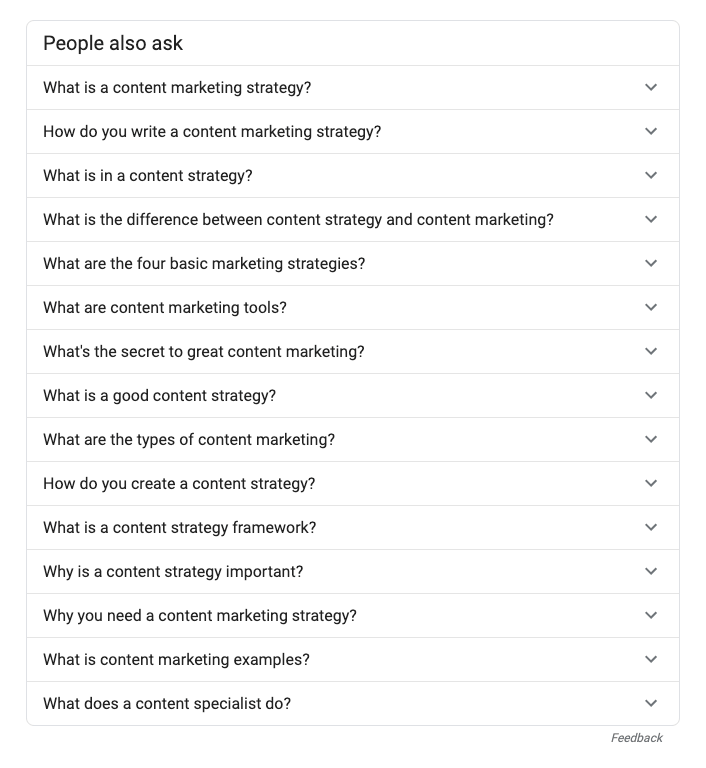
Just a few clicks will give you insight into a wide range of topics that are proven to be relevant to your target audience. And the more digging you do, the deeper the topics start to go. You’ll see results that cover all types of search intent—inspiration, education, and execution.
Google Features Are Just a Content Ideation Starting Point
You have to walk a fine line when using these Google features to come up with content ideas.
When you’re truly stuck on new topics, it’s easy to fall into a trap. You see these predefined topics and think you can just run with them. But just because people are searching for these terms doesn’t mean you should stop the ideation process short.
Remember—the topics generated by Google autocomplete and “People Also Ask” are the most common terms. There’s nothing about them that will set you apart from competitors who have access to the exact same insights.
So, when you find these ideas, treat them as starting points. How will the topics and keywords fit into larger pillar pages? What’s your unique spin on the subject that will make for 10x content?
Coming up with content ideas is hard. There’s no way around it. All you can do is take advantage of the free and easy methods at your disposal to spark some creativity. Once you get over the initial hump, filling out the editorial calendar won’t feel so daunting.
But if you need some additional help, there are hundreds of freelance writers out there who can bring a unique perspective to your strategy.
